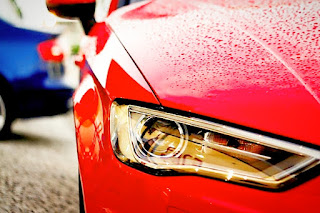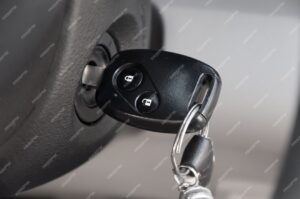By adhering to these uncomplicated steps, you will be able to rid your car’s headlights of the moisture and condensation that has accumulated there and prevent it from happening again in the future.
How to Remove Condensation from Your Headlight.
Even if you are the type of driver who regularly washes and moisturizers their vehicle, it is still possible for their headlights to develop condensation. You are not to blame for this. The question is, why does this moisture build up, and what can be done to get rid of it?
Throughout the course of this walkthrough, we are going to investigate the factors that lead to condensation in headlights. In addition to this, we discuss methods for removing the moisture and differentiate between the two types of water entry: condensation and infiltration. Finally, we answer some of the concerns that are asked the most frequently about headlight condensation and provide some guidance on how to prevent the accumulation of moisture.
What are the Causes of Condensation on Headlights?
The vast majority of vehicle headlights will emit heat in some form or another. Some varieties, such as halogen headlight bulbs, emit a significantly higher amount of heat than others. In spite of the intense heat, there needs to be a sufficient amount of ventilation in order to keep the temperature at a normal operating level. A venting feature is included in headlights so that heat can be dissipated; however, due to the architecture of the headlights, this may also allow some moisture to enter the assembly.
In the event that moisture does get inside, it ought to be soaked up by the lamp materials even while the lights are on. Because the temperature on the outside of the lens will be lower than the temperature on the inside, condensation will form on the lens. Condensation forms in the headlights as a result of this design.
According to the theory of thermal convection, warmer air will rise, while air that is cooler would sink. Condensation forms automatically at the interface between the two. Sadly, a significant number of motorists are forced to contend with this issue on the headlight lens.
How to Eliminate the Condensation That Forms on Headlights
If condensation has just just formed, you can try turning on the headlights to see if this helps to evaporate it. If this is not the case, you may need to clean the headlight vents with a can of pressurized air or dry the headlight vents with a hair drier. If the headlight housing has difficulties, the only option to improve the seal is to replace it with a new one.
After condensation and moisture buildup, the following is a more in-depth tutorial on how to dry the headlights of your vehicle.
1. Have patience with the headlights that have condensation on them
The moisture will evaporate on its own as soon as the working conditions return to normal. Condensation is unavoidable; therefore, the problem should be addressed by the automobile’s designers. In point of fact, numerous automobile manufacturers, including Hyundai, have distributed service bulletins that warn technicians not to interfere with normal levels of headlight condensation.
In order for the heat to function properly, the headlights need to be turned on. It shouldn’t take too much time for the moisture to leave your eyes, and by the time it does, your vision should be back to normal. In the event that your vehicle is equipped with LED lights, it is possible that this will not perform as well as you would like it to. On the other hand, the results won’t change if you just leave the automobile out in the sun. Be careful, however, that with time the ultraviolet rays of the sun can cause the lenses to yellow and also cause damage to the car’s paint and the interior.
2. Air that is Under Pressure
If the vent on the headlight assembly is obstructed in any way, the moisture will not be able to escape. Compressed air is the key to solving all of these problems, therefore there is no need to worry about anything.
Using a can of compressed air, you should attempt to blow the impediment away from the vents. When employing this method, however, exercise extreme caution because it is possible that you will wind up pushing the dirt and debris further into the headlight housing rather than really removing it.
3. An electric hair dryer
In the event that the moisture issue is significant, you will likely need a more potent remedy. While you are carefully removing your headlight assembly, be careful not to harm the seal by doing so.
Utilizing a hair dryer, you will be able to hand dry each component of the assembly. When using a hair dryer, you need to be careful not to expose your hair to too much heat, since this could cause it to become damaged. In the event that the dryer gets too hot, the wiring and any other electrical components within it may melt. In addition, the rubber or lens can get damaged in the process. Because of this, you should set the temperature of the hair drier so that it does not reach more than 180 degrees Fahrenheit when it is blowing air.
After the moisture has been removed, the headlamp needs to be sealed, with the exception of the valve and the drain hole, in order to ensure that the issue does not reappear after the moisture has been eliminated.
4. Make the necessary repairs or replacements to the headlight assembly.
Altering the appearance of the headlights
If the above solutions do not work for you or the problem continues, you might think about getting a new headlight assembly or having the one you have repaired. A defect of some kind is the cause of the buildup of moisture, which is permitted to occur.
It’s possible that the rubber gasket in this headlamp assembly has broken or been damaged in some other way. In either of these circumstances, the headlight will be subjected to a greater amount of water than it ought to be. Consider the repercussions of your decisions. Choose this alternative if the only thing you need is a new rubber gasket but the assembly will cost you a lot of money. If not, you should purchase a new assembly, especially if the old one is cracked.
Comparing Water Penetration to Headlight Condensation Humidity
When checking the moisture in the headlights, it is extremely important to make a distinction between typical condensation and water penetration. You will be in a better position to figure out how to resolve the issue now that you have this information.
Condensation in the headlights is caused by the transformation of water vapor from a gas into a liquid. It’s the opposite of what happens with evaporation. Condensation manifests as fogging, misting or small moisture droplets situated inside the light lens. The functionality of the light should under no circumstances be jeopardized by the presence of condensation, which is a natural occurrence. In most cases, it ought to disintegrate on its own without causing any additional damage.
The same restrictions do not apply to water seepage through the cracks. Condensation isn’t as serious of a problem as it is when water actually pours into the light and accumulates there. The fact that water was able to penetrate the headlight assembly suggests that it was compromised in some way, allowing water to enter. Once inside the assembly, the water will not naturally evaporate and may begin to collect. This may cause the assembly to become contaminated.
If the headlight assembly is covered by a warranty, the defect may entitle you to a free replacement as long as you report it within the warranty’s terms and conditions. If this is not the case, you are responsible for replacing it yourself in order to prevent serious damage to the headlamp or the electrical components.
1. Perform routine maintenance on your headlights to avoid condensation buildup.
Normal condensation is unavoidable and will take place, but by performing routine inspections, you can prevent significant water penetration. Normal condensation will take place. If the drain holes in the light assembly are obstructed in any way, water will begin to gather. If you find this problem early on, you have the opportunity to fix it before it causes any problems.
If you discover a defect in the headlight assembly, such as a broken seal, you can attempt to repair it before water enters the housing if possible. If the lens or housing has been broken, however, it is recommended that you replace the item.
2. Headlights That Are Used Frequently
Utilizing your headlights is an effective way to prevent moisture from getting out of hand. Because of the heat produced by the lights, condensation is eliminated as it occurs by being burned off.
Make sure your headlights are on at all times, even if you don’t drive very often while it’s nighttime. You are free to park your vehicle in direct sunlight on occasion; however, you should be aware that doing so may, over time, cause ultraviolet (UV) damage to the car’s lights, body, and interior.
3. Create a resounding signet ring
A reliable seal is essential in order to prevent moisture from penetrating the headlight assembly. The good news is that it is not difficult to acquire some premium sealant items that will be of assistance to you in the process of forging this link. You might find, after doing some research, that if you follow these instructions, it will help you establish a seal on the package.
Carefully disassemble the headlights and set them aside.
Check to see if there is any debris or damage on the seal in its current condition.
Any debris that can be removed easily needs to be cleared away.
A bead of sealant should be applied on the factory seal in order to prevent moisture from leaking in.
If the seal is cracked, it is possible that you will need to replace it in its entirety.
Reassemble the headlight housing you removed earlier. Be sure to double-check the angle and reconnect everything in the exact same way that it was done when it was initially taken apart.
Verify that the light is shining in the typical manner.
Perform another inspection of the housing to see whether the moisture problems have been resolved.
Checking the electrical contacts, vents, and O-rings that surround the bulb is something else that needs to be done at this time. If the O-rings look like they are starting to wear out, you should replace them so that water won’t be able to go any farther inside the lamp. You can use a sealant gel to patch up any minor gaps that may exist between the lens and the housing of the camera.
Will the Condensation on the Headlights Go Away?
When the headlight design is working as it should, the condensation should evaporate when the lights are turned on, and the water should drain by itself when the lights are turned off. Because some light bulbs, such as LEDs, do not emit as much heat as others, it can take a little bit longer for the sun to evaporate all of the water vapor.
Does Condensation Pose a Risk of Damage to Headlights?
Condensation does not have any effect on the headlights’ ability to perform their purpose. It is not expected that the performance will be affected, and the majority of reflectors are pre-treated with an insulator spray to prevent degradation and corrosion. But if the assembly’s seals are broken, water could get into the electrical components, which would be an even bigger issue.
Do WD-40 Headlight Defoggers Work?
The majority of households keep a can of WD-40 on hand for use in a variety of unanticipated situations. If you’re having trouble with your headlights fogging up, try using this multi-purpose lubricant. It might help. Even though it’s not the best cleaner on the market, it should be adequate to get the job done when you’re in a pinch.
If Vinegar Is Poured Into Headlights, Will It Cause Damage?
Vinegar is a wonderful cleanser that can be used for a wide variety of tasks, including cleaning headlights. It has a well-deserved reputation for being able to properly remove discoloration and fog from headlights. In addition to this, it should eliminate any dirt and grime that has built up on the lens. In the event that the lenses begin to yellow or become cloudy, you may wish to combine some baking soda with some vinegar in order to create a solution that is even more effective.
Is a headlight fog able to be removed with a Magic Eraser?
It is imperative that you never use Magic Eraser on the paint of a vehicle because doing so will ruin the finish. However, it has been demonstrated that it is safe to use even when the headlights are cloudy or misty. It is also possible to eliminate the yellow discoloration that appears with the passage of time with its assistance. Before allowing it to air dry completely, give each lens a light buffing with the wet Magic Eraser and then remove any residue with a paper towel.
Condensation on the headlights is the end result.
It’s possible that the wetness will eventually evaporate on its own. If you find yourself in a situation where you have to intervene, you can try sealing the headlights with a hair dryer or compressed air. If nothing else works, you may need to get a new headlight assembly, especially if the old one is allowing moisture to get inside the lens of the headlight.
Condensation in the headlights can be unsightly, which is especially important to keep in mind if you take a lot of pride in how good your car looks. In addition to checking the headlights very soon to make certain that there are not any impending technical problems, it is best to deal with the dampness as soon as it appears so that it does not accumulate. Sometimes the condensation will clear out on its own without any assistance from you, but you should always be prepared to use our instructions to get your vision back to as clear as glass no matter what happens.











+ There are no comments
Add yours